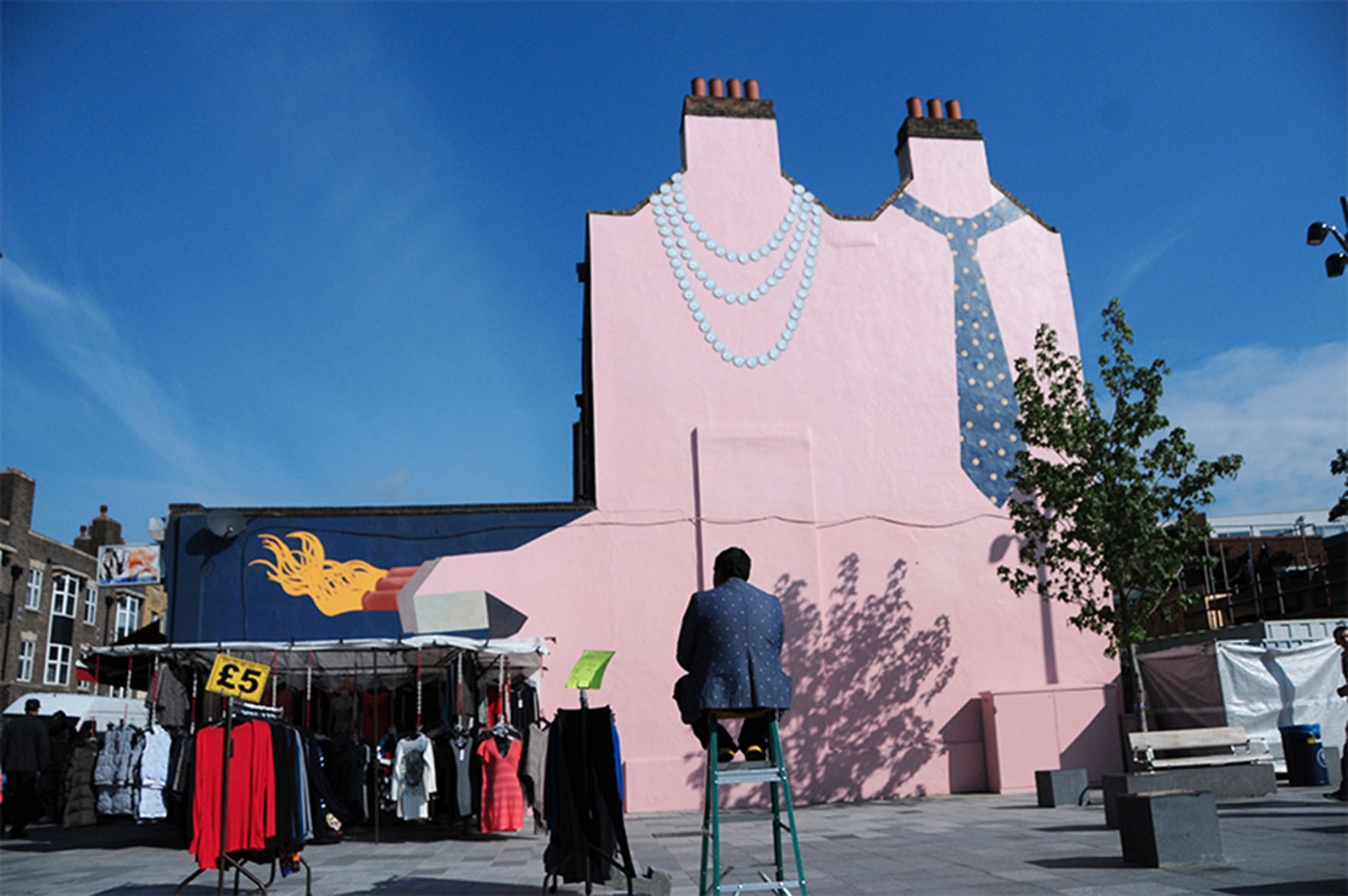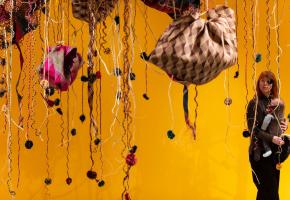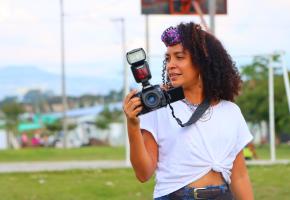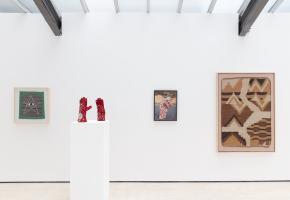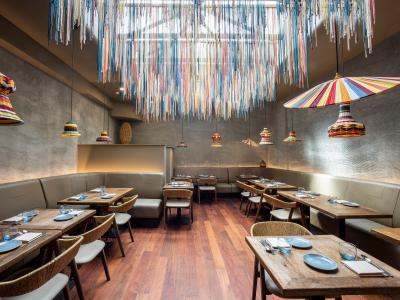Pato Forrester studied Art under Kenneth Keble, Felipe Noe and Luis Benedit in Buenos Aires which was followed by a stint in New York. It was after graduating from Goldsmith’s College that he turned his eye to a more public art, starting out with a very defined project that he set himself: -
“My tactic, when I came out of college was: ‘I’m going to do all my art work within a 3- square mile [radius], and that will somehow sustain my practice, instead of going out into the [traditional] art world’. So, I chose New Cross, Brockley, Deptford. Telegraph Hill landed within that. After a while, if you go on doing your own artwork in a public space, eventually the public will lynch you, because you can’t put yourself everywhere all the time without people getting bored of it. So, I started to perceive that, as a survival tactic, I needed to offer my skills to others and also involve them at the same time as I was doing my own thing…" says Forrester.
He continues: "It was a slow development. It basically happened organically and I observed this and responded to it. So, because I’ve done a lot of murals in Lewisham, having painteded about 15 over a 19-year period, there were young artists who came to me and said: ‘I grew up with your art and your murals, could I now come and help you?’ ‘How can I become an artmonger?’ In 2006, we did a piece on the one- way system with ‘Hands’. We photographed 500 people’s hands in groups, people who did different things, we would stop people in the street and photograph their hands… we printed 150 metres of hands!”
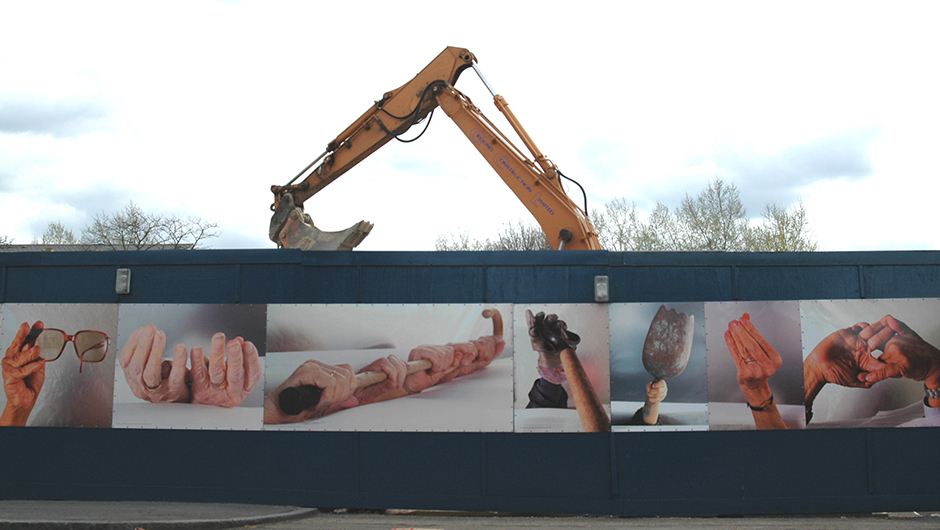 Hands Mural
Hands Mural
This gradual development of the idea of a more communal effort over 20 years, ended up creating a series of fascinating art works of all kinds. Forrester is very keen to keep a structure in place, however flexible, so for instance, initially they did some work on trees on Telegraph Hill, painted bins and even planted sunflowers, as he says: “ Half of my practice is doing my own work and the rest is how to offer the public space to others and work within a format.”
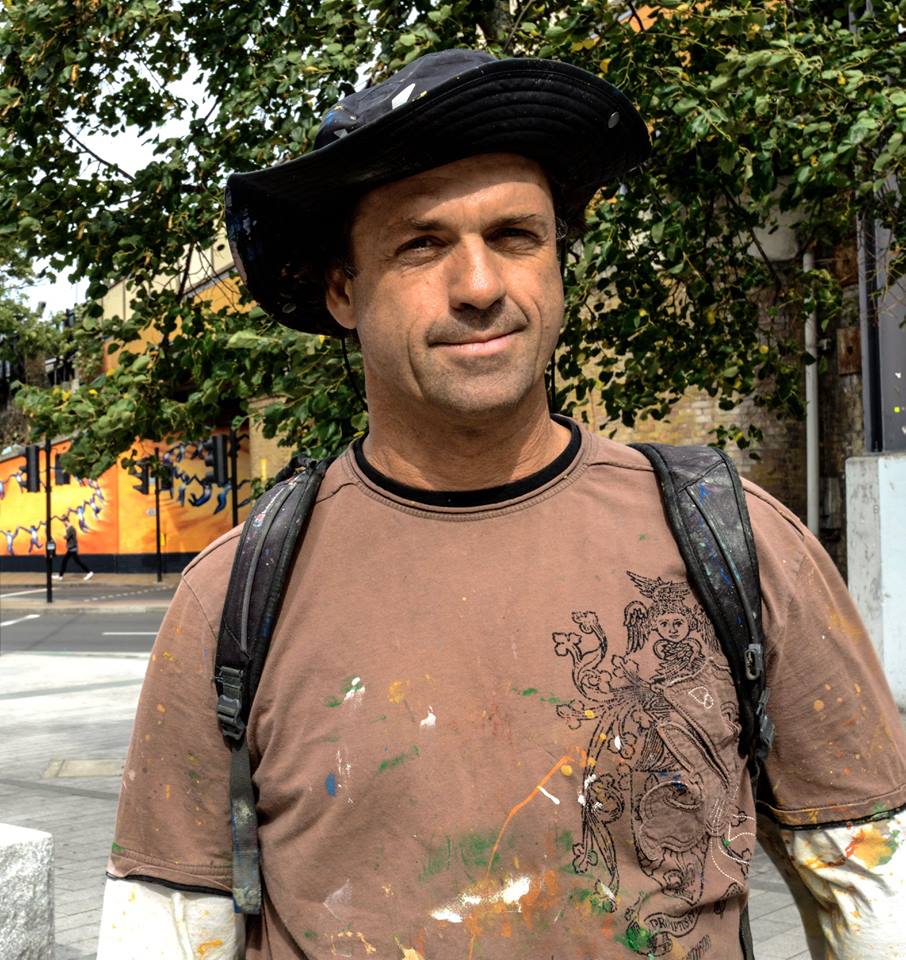 Patricio Forrester
Patricio Forrester
Forrester: - “Sometimes you start by making a small decision and sometimes a bigger decision, but always within a framework- so for instance, with the trees on Telegraph Hill, one year we said we will do things on the tops of the trees and the following year we did different things, like the ‘A4 PROJECT’. One that I did was a small poster saying: “ I’m lost, please tell my cat!” We then approached the Haberdasher Schools on Telegraph Hill and asked them if they wanted to work with us on the A4 FORMAT and there were many ideas that were pinned onto trees. The pupils invented their own versions of the same format.”
At the time of the tree art works, there were also various project that involved ‘wearable art’ such as wearing something unusual and going around to the local corner shop or engaging with people in the street. It was a while before these artistic events consolidated into actual murals.
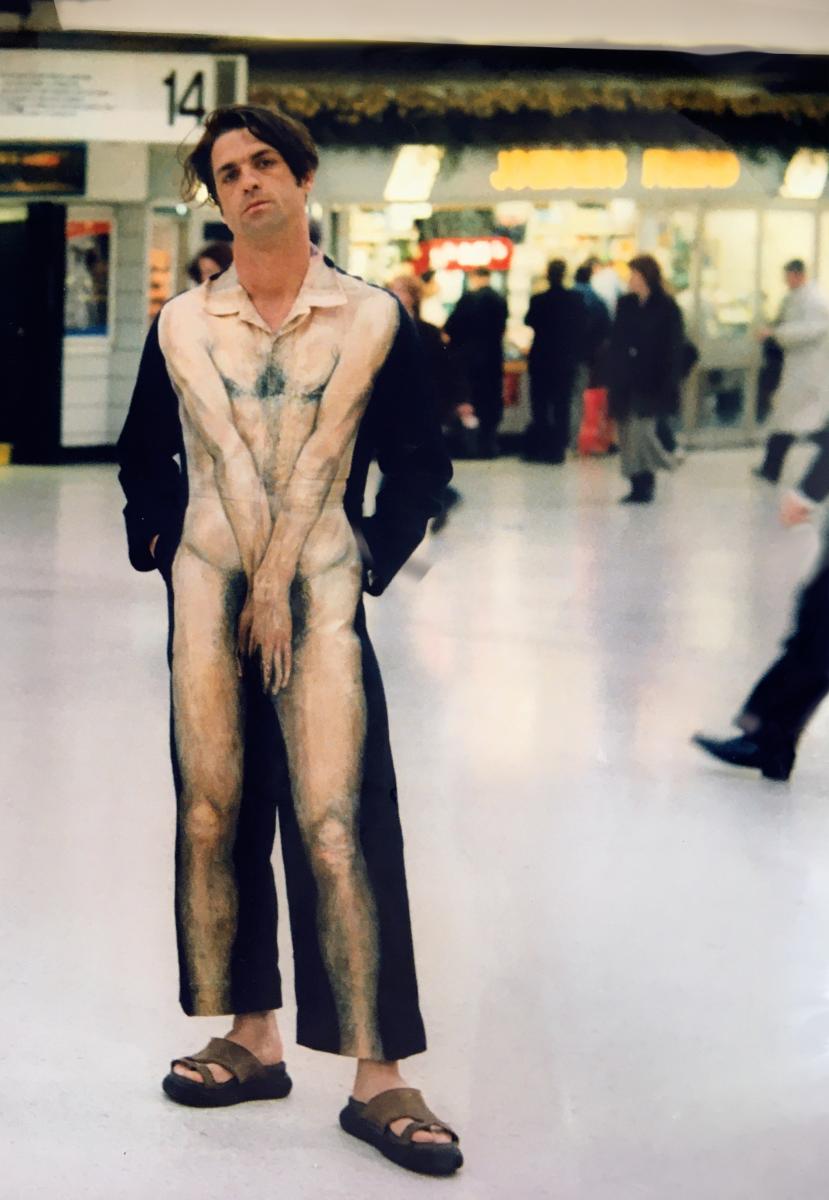 Patricio Forrester in a 'wearable art' item.
Patricio Forrester in a 'wearable art' item.
Forrester: - “The murals landed on my lap because I’m a painter. I see myself more as an artist, than as a painter. There are painter painters and artist painters. I had beginner’s luck with this artwork of ‘His ‘n’ Hers’, the tie and the necklace. That changed everything and marked the beginning of the local government seeing the value in what I was doing…They started appropriating it, which meant that they wanted it. I did not get paid to do the original mural but I got paid to restore it. Initially it was to integrate myself and then it was to catch people unawares. I didn’t want to belong in the art world, I wanted people to find my art as they are going about their business, on the bus or whatever.”
Artworks in the community have a massive impact. On six occasions, Artmongers’ Forrester and his colleague Catherine Shovlin went to Syrian refugee camps in Jordan ( Azraq camp) where they tried to improve the environment with artworks and colour, working closely with the people there. There is an extraordinary example of the legacy of this kind of work: -
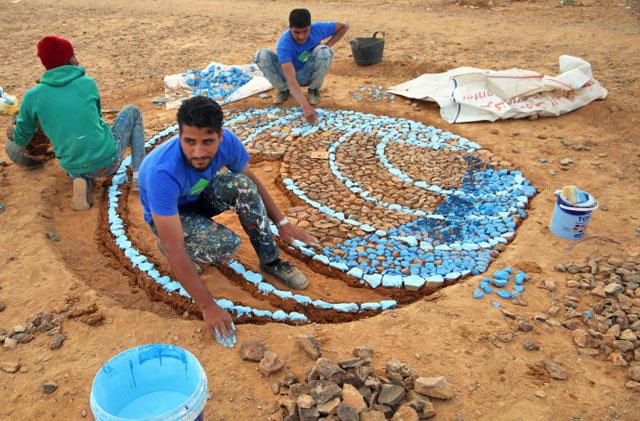 Azraq Refugee camp Jordan.
Azraq Refugee camp Jordan.
Forrester: - “There are a couple of interesting stories for example, in the Azraq in Jordan, one of the ‘villages’ was [actually] off- limits... But, through the wire fences, we could see that they had copied the designs that we had done [in the other village] and they had changed them, creating their own versions! That was beautiful and very moving. I tried to go in there, but they didn’t allow it .”
So, in many ways, these works and the murals grow in importance and become an important feature in the local communities. They become linked to the area, substantially enhancing its community feel. This is why when the freeholder of a building decided to paint over a delightful ‘trompe l’oeil’ of a wind-up key on a wall in Brockley, all the locals and even the council themselves, were greatly put out! This was considered a monumental loss to the area as it had literally become a ‘key part’ of the identity of Brockley. The council have actually asked the freeholder to allow its reinstatement, but they, not understanding its value at all, are requesting huge sums of money for lawyers and guarantees making the whole replacement unviable. Forrester has therefore decided to paint a very similar artwork close to Borough Market (SE1) just by London Bridge.
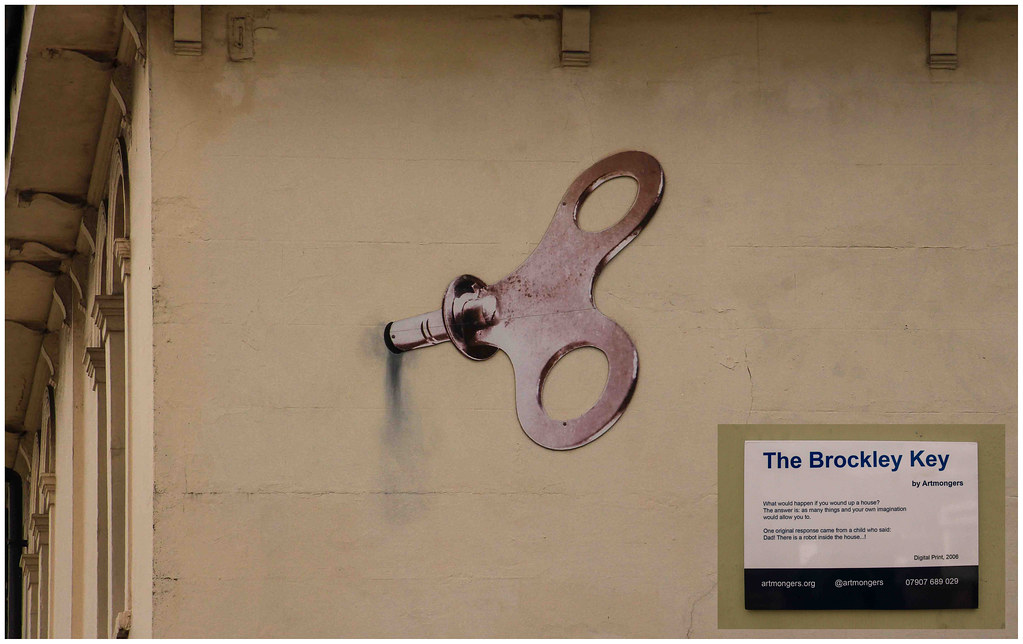 The original 'key' Brockley
The original 'key' Brockley
This all adds up to how whole generations of people have grown up with the Artmongers’ murals. Now, Forrester and his supporters are trying to attract sufficient pledges towards this huge project of a new school:- “We are crowdfunding to try to attract funds from the Mayor of London and Goldsmith’s college to found the Lewisham school of Muralism. If we can get 300 pledges from the local community, then the Mayor will pledge half of the money required, which is about £35.000. That money will be for us to obtain all the equipment, proper equipment and the base would be at Goldsmiths… The new warden Francis Corner, re-tweeted about one of our new murals in Deptford and so I approached her. We have then rebuilt bridges and we’ve sent them a proposal for the new School of Muralism. We asked for 15K and they immediately said Yes! They have said they will also grant the use of classrooms. Basically, they have given us 21K, and Brewer’s the builder’s DIY and paint shop from Peckham, has donated six thousand pounds worth of paint! They’ve been contributing small amounts here and there [ for some time]. I go on my bike and take all their rejects of badly mixed paints … I go behind the counter!”
Support for the new school has been coming from many directions, including the Albany and the Laban Centre. They might not have the capacity to assist financially but they have access to huge networks that is just as viable.
The new Lewisham School of Muralism will be structured in three groups of 12 students, half of whom will be from Goldsmiths and the other half from those who apply. It is hoped that the school will be inaugurated in October 2020, with entrance requirements similar to any art school.
Forrester: - “We will develop all the ideas and the concepts over the winter and then we will do six murals that will be painted in Lewisham with those ideas. We have already got the sites, some really cool places! We will work on themes, there might be people who are not necessarily artists, who come from other disciplines. I’m not an art collective. I’ve just found a niche, which is: that there are a lot of people who want to be involved in the arts, but not necessarily as the artist. There is a lot of energy there that you can tap into.
For example, we were looking into applications from anthropology, or visual anthropology, even people from Extinction Rebellion, there will probably be a mix of artists and activists. The specific thing that I want to pass on is the ‘collaborative or participatory process’, that is the difference between muralism and street art! Street art is done by an [individual] artist who could have painted it in his own studio but he did it in the street. He didn’t ask anyone to collaborate and he repeats and sticks to his own style, a Banksy, for example. We don’t really have a style. I hate style! I think it doesn’t serve any purpose to have a style. Everything has to be analysed within the concept of where it will be painted, according to the needs of the place and the budget and practical stuff as well. So, for instance, if you don’t have a lot of money you have to paint a lot of flat surfaces… So, in terms of the participatory element, I am planning to pass on that specific skill, which is a really difficult skill to pass, because a lot of the time, when you start a participatory process, at first all you get are a lot of clichés and that is the reality of it.
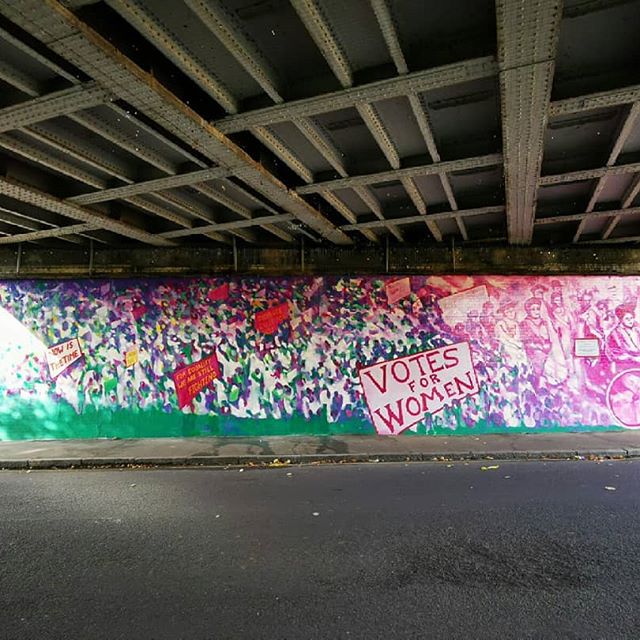
If you ask a kid, what would you like to do, they will say. I want a butterfly…or I want a rainbow… and that is 99% of the time! I have never, ever painted a butterfly or a rainbow, so I try to move from what I was initially given, to finding a place where we’re both equally interested … you have to move them away from the clichés and try to imagine together, something that they didn’t know that they wanted. This is a lot more interesting. A ‘participatory process is not about giving people what they want’, so that the School of Muralism is going to be the school of participatory muralism and those six murals that we will be painting, will not emerge from one single person, so it’s about borrowing ideas, stealing and adding, with the responsibility that you [always] have to add something new. “
Support and pledges towards for the new Lewisham School of Muralism are being organized through Spacehive :- https://www.spacehive.com/lewisham-school-of-muralism Up until today, they have clocked up to 103 backers with £27,642 of pledges. The objective is to arrive at a funding goal of £64,586 by May 25th 2020. Pledges will only be charged if the goal is achieved.


